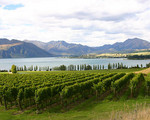
It is hoped that the University of Canterbury-led NZ$500,000 study will result in an increase of up to 10% in income for the billion-dollar local wine industry.
The two-year research project, headed by Professor Andy Sturman, will begin this summer.
Early adopters
According to Sturman, the project will use high-resolution computer modelling and mapping systems to investigate localised variations in vineyard weather to help predict future environmental conditions for grape production.
The project will also help New Zealand’s wine-producing sector adapt to climate variability and to take advantage of opportunities that result from a changing environment.
Sturman said that New Zealand’s wine industry will serve as early adopters of this technology, while other horticultural and agricultural industries worldwide will also benefit from it.
“This research will develop new knowledge of the impact of climate variability on wine production in New Zealand. A set of climate and crop modelling tools is forecast to increase income to New Zealand wine exporters,” he said.
“The application of the new modelling tools is expected to result in an estimated 5-10% increase in New Zealand wine export earnings of at least NZ$2bn by 2020.”
New Zealand’s biggest wine producers and exporters include Pernod Ricard (NZ), Delegats and Villa Maria Wines.
Weather warnings
The wine industry is highly sensitive to variations in weather and climate, which can significantly affect export quality, volumes and income.
In an earlier interview, Monty James, market manager for Asia at New Zealand Winegrowers, told FoodNavigator¬Asia that wine production and exports had been hit in the recent past with climatic variations, especially drought.
“The quality of wine is highly sensitive to environmental conditions, as the flavour of the final product is critically important to the marketplace, more so than many other crops, such as sweet corn,” said Sturman.
“Quality is so important and predicting weather variation in vineyard regions throughout the growing season is critical to the future of the industry. Grape quality is highly dependent on environmental conditions.
“We are seeking to link microclimate models with crop production models to produce consistently better quality wine.”





